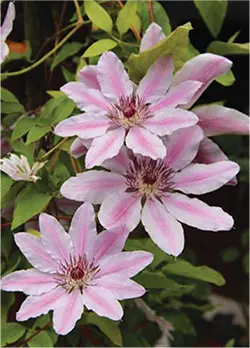
A Versatile Plant with Rich Heritage
Clematis, primarily native to Japan and China, belongs to the buttercup family and comprises around 300 species. Known for its climbing ability and clusters of flowers or fruit, the term ‘Clematis’ is derived from the Greek word ‘klematis’, which translates to ‘twig’. This plant has been notably absent from Bach’s flower remedies, but its significance spans across various cultures and applications.
Historical Significance and Traditional Uses
Historically, Clematis holds a special place in different cultures. Native Americans harnessed it as a natural remedy for migraines, nervous disorders, and skin ailments. Furthermore, early American settlers ingeniously used this plant as a substitute for pepper in their culinary preparations, a testament to its versatility, especially considering the scarcity and high cost of actual pepper during that era.
Modern Applications and Benefits
In contemporary times, Clematis is recognized beyond its ornamental value. It’s regarded as a symbolic plant for those who feel disengaged or disinterested in their current life circumstances. This flower essence is believed to aid in grounding individuals, bringing them back to the present and enabling them to appreciate and engage more fully with their immediate surroundings. Its use extends to various sectors, including botanical studies, gardening enthusiasts, and those exploring natural remedies.
By delving into the world of Clematis, one not only uncovers a plant with a fascinating backstory and multiple uses but also gains insight into a species that intertwines the past with the present, nature with culture.
